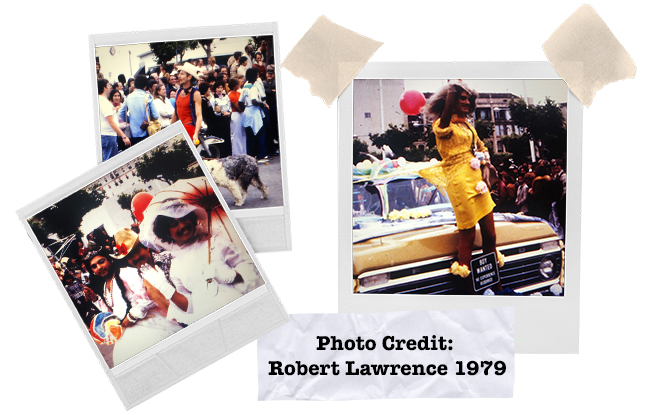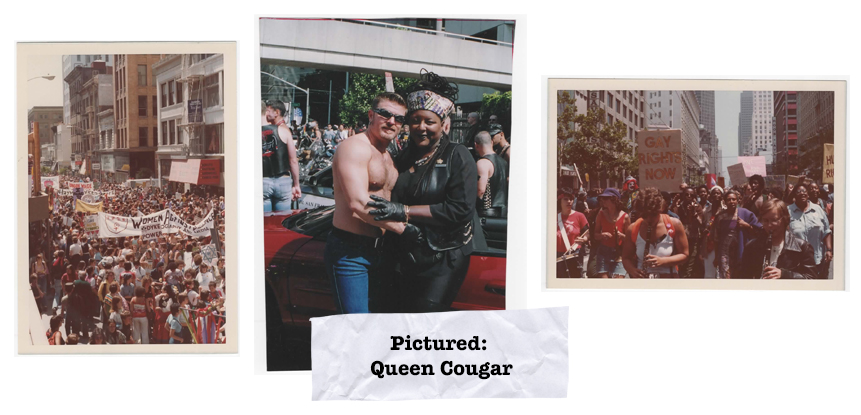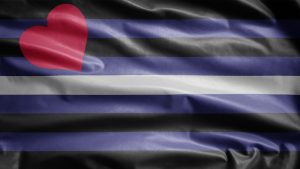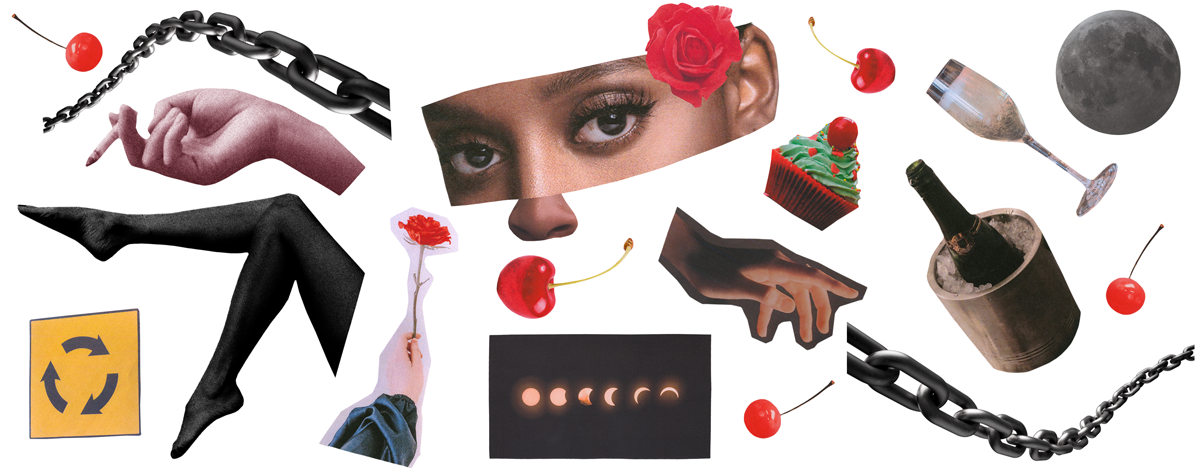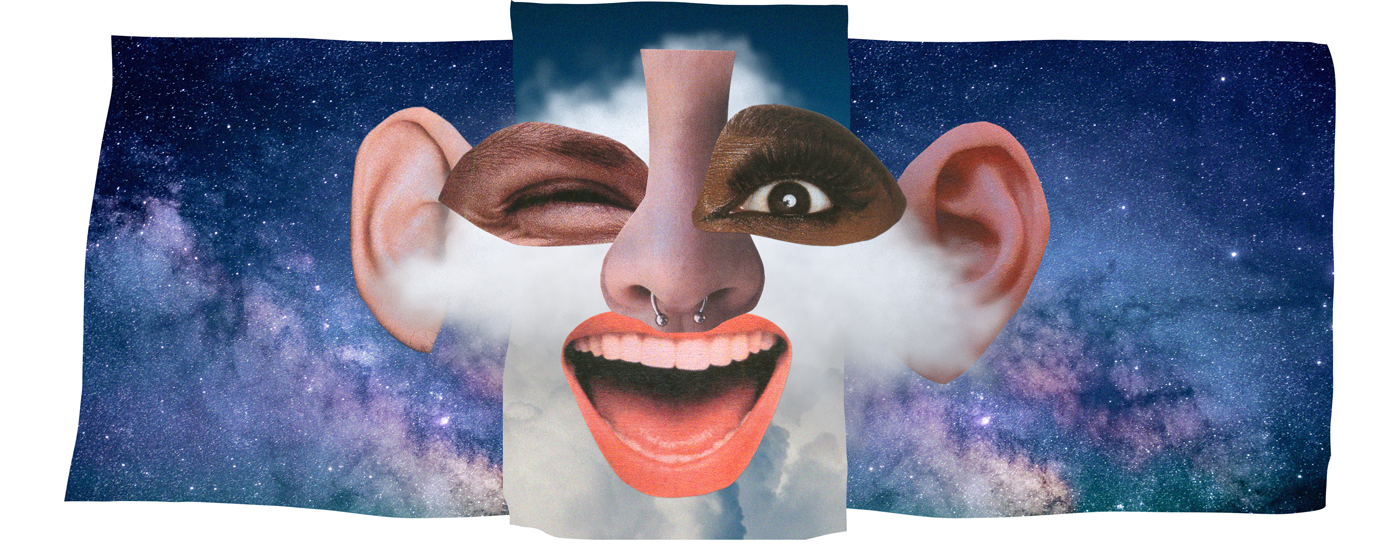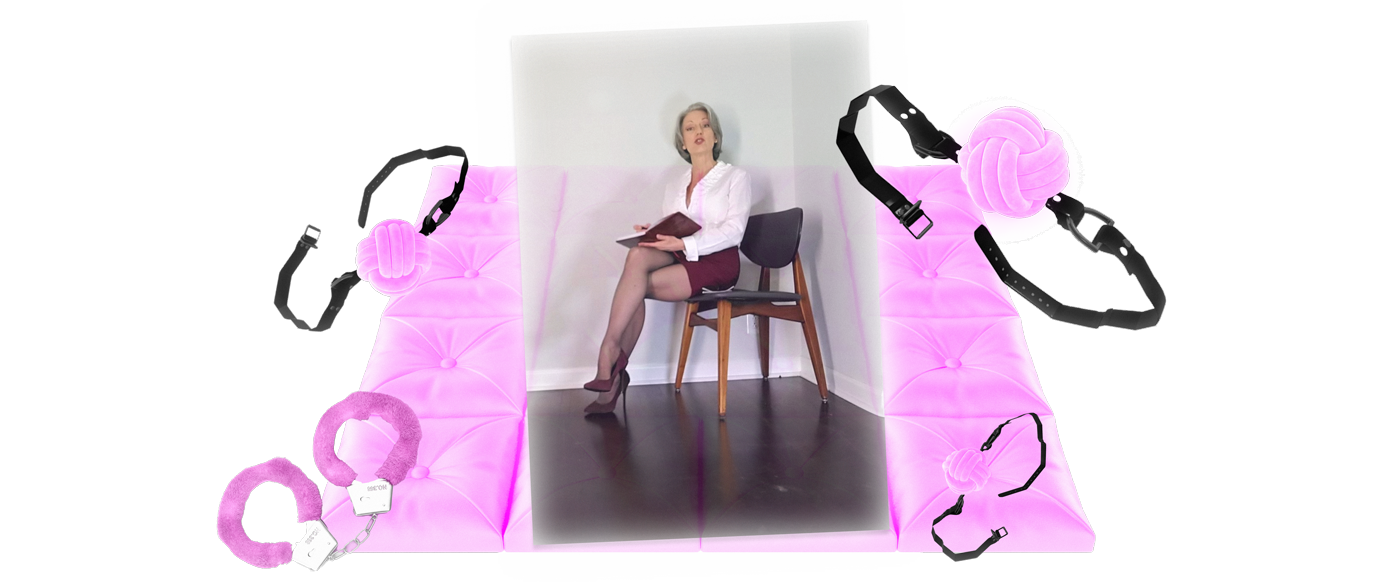How long have you identified as part of the leather/BDSM community?
QC: I’ve been in the BDSM community since 1991
BC: Basically, I identified as a part of the BDSM community since I moved out here [San Francisco] in 1985. I moved from Wisconsin, where there pretty much wasn’t such a thing back in the ’80s.
RL: Marched in first pride in 1976 I was stationed on the Presidio in the Combat Engineers next to GG Bridge.
How long have you identified as part of the LGBTQIA+ community?
QC: I have been a Gay woman since 1975.
BC: I came out in 1982. I was in college in music school at the time, so it wasn’t like I didn’t know any other gay folks. (I insisted that I was straight for years before that, even though I can now look back and see that all of my serious “crushes” were on girls or women.)
Have you ever marched at Pride? If so, when was the first time you marched? What was it like? Did you march with a contingent?
QC: I first marched at SF Pride as a Gay woman in 1977. At that time I marched with a Black Lesbian Consciousness-Raising Group. I was marching in my first parade and for a political purpose and it was very exciting. I felt like I belonged and the overwhelming sense of love that I felt from my friends and strangers in the parade and crowd was very nurturing to my soul.
BC: I marched at Pride for the first time the year after I moved to San Francisco. I actually marched with the leather contingent! It was a colossal eye-opener for me. I loved finally being able to see so many other folks like me (or at least similar to me) in the same place, celebrating ourselves.
RL: Some of us were there but not in uniform. Just that year a Dyke had been outed and hung herself in her uniform. So being out or outed in the military was dangerous.
When is the first time you recall seeing leatherfolk at Pride? How were they received at the time?
QC: In 1991 when I started attending leather events I watched the Leather contingent and was surprised as they were cheered along the way. Of course, I also saw people who were disgusted by the attire and behavior of some of the BDSM marchers.
BC: The leather contingent was placed toward the back of the parade due to the fact that we were still considered very controversial. We were still a bit of a pariah in the eyes of the “mainstream” LGBT folks who it seemed wanted to avoid being stigmatized by the world at large for yet another reason. (The crowd seemed to enjoy our antics, however.)
RL: The rigid organization of what is “leather” was not locked in so there were many people involved wearing a wonderful range of style and colors. We would stop and wait for other friends to come along to walk with. Yes, there was the black leather hyper-masculine look right along with brown suede and skimpy jock straps collars were there but not yet consolidated into affinity groups as it is today.


